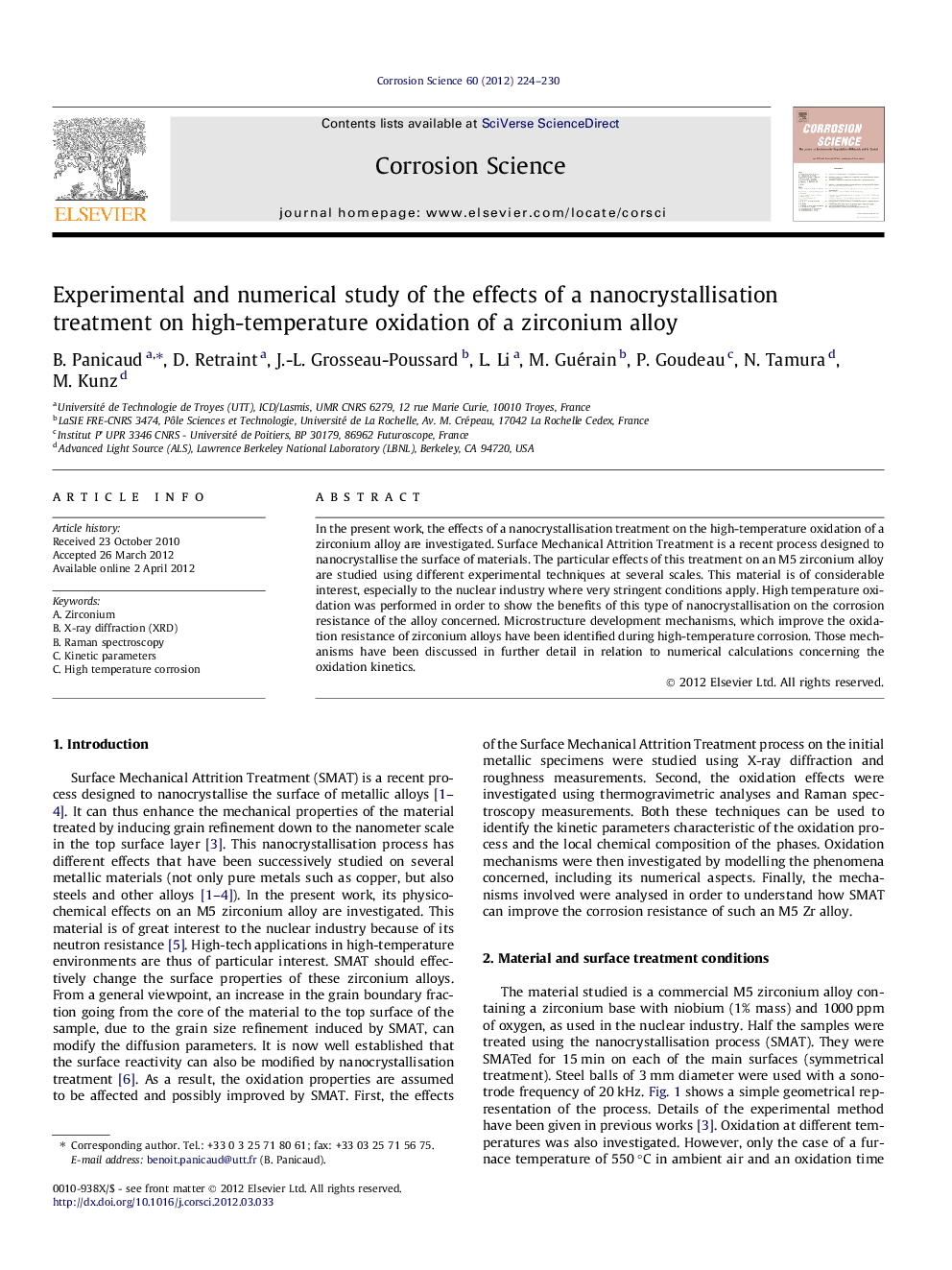| Article ID | Journal | Published Year | Pages | File Type |
|---|---|---|---|---|
| 1469551 | Corrosion Science | 2012 | 7 Pages |
In the present work, the effects of a nanocrystallisation treatment on the high-temperature oxidation of a zirconium alloy are investigated. Surface Mechanical Attrition Treatment is a recent process designed to nanocrystallise the surface of materials. The particular effects of this treatment on an M5 zirconium alloy are studied using different experimental techniques at several scales. This material is of considerable interest, especially to the nuclear industry where very stringent conditions apply. High temperature oxidation was performed in order to show the benefits of this type of nanocrystallisation on the corrosion resistance of the alloy concerned. Microstructure development mechanisms, which improve the oxidation resistance of zirconium alloys have been identified during high-temperature corrosion. Those mechanisms have been discussed in further detail in relation to numerical calculations concerning the oxidation kinetics.
► SMAT leads to a modification of surface properties of an M5 zirconium alloy (grain size and roughness. ► SMAT induces a change in the oxidation kinetics during high temperature oxidation. ► A diffusion model is able to reproduce kinetics and emphasise the consequences of SMAT on dissolution of oxygen in Zr.
